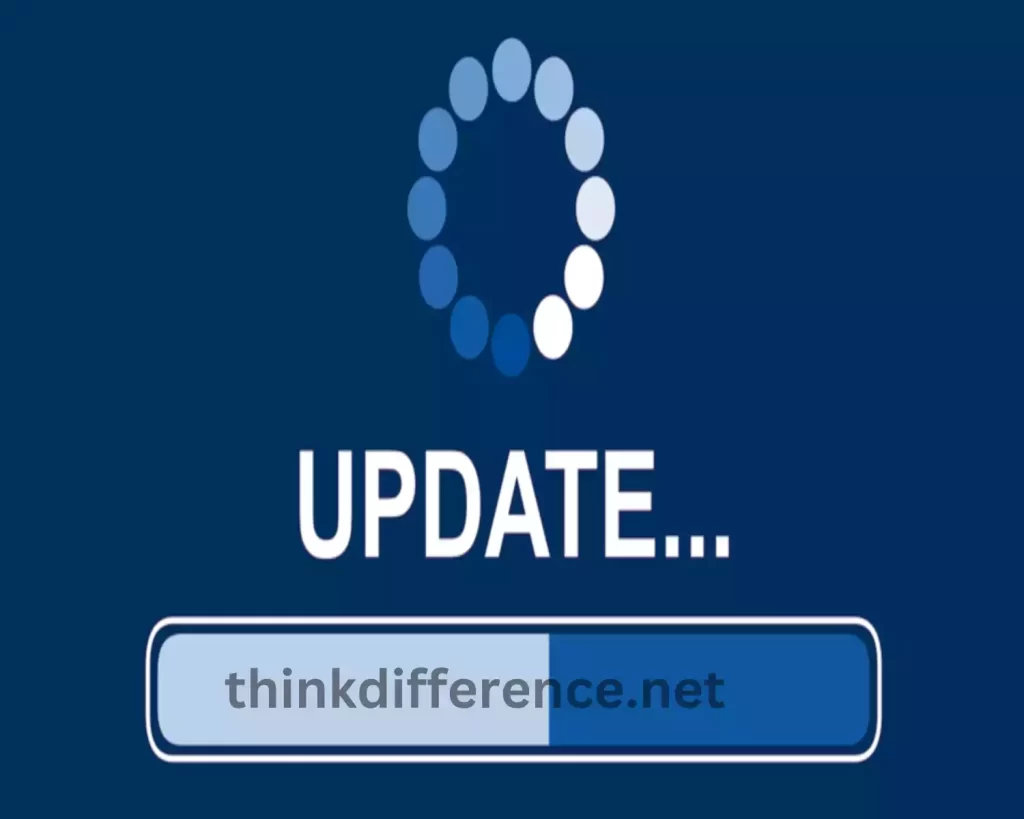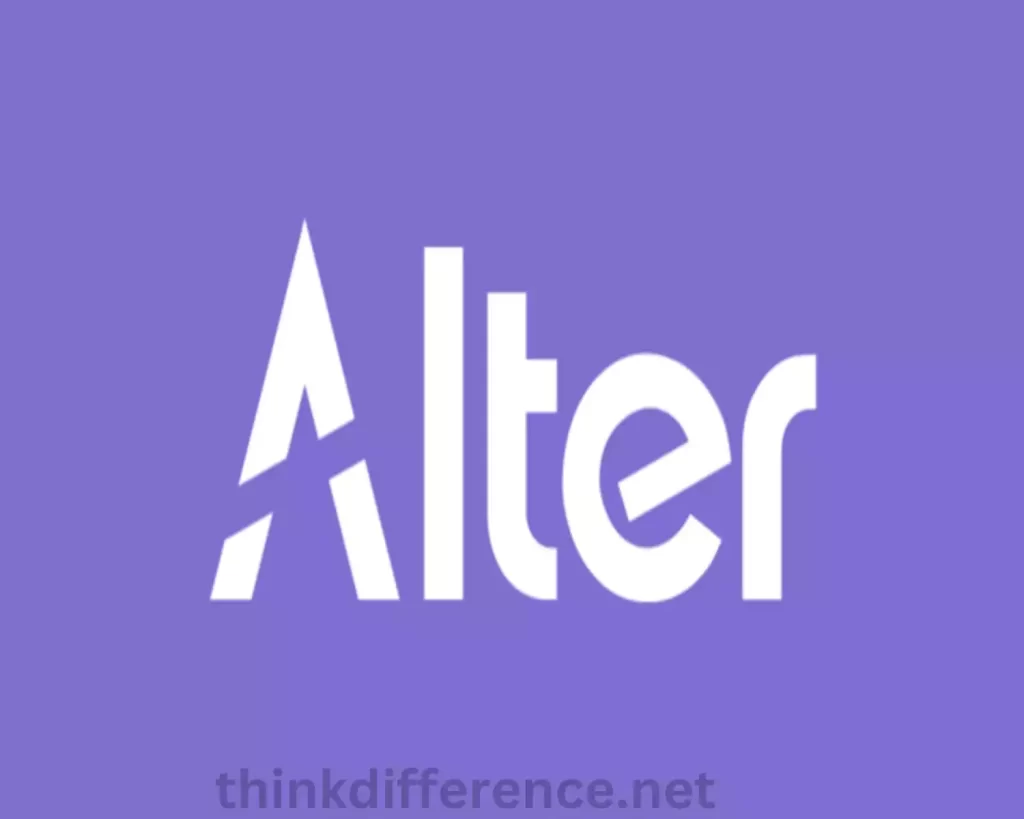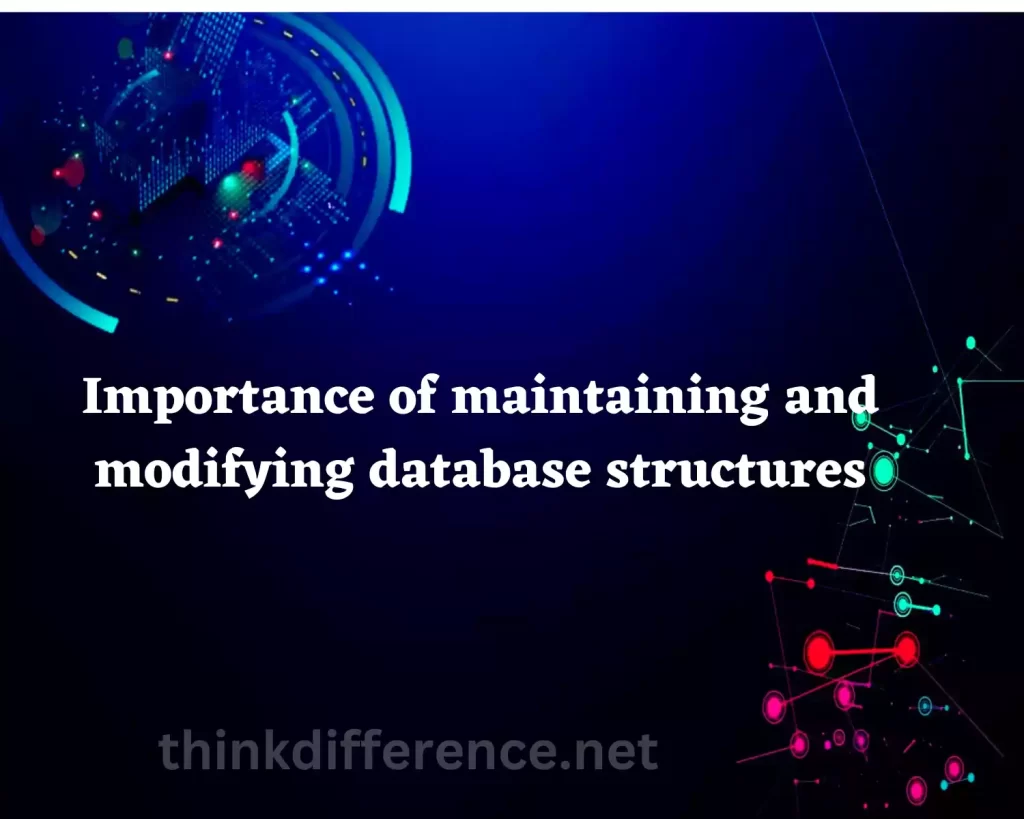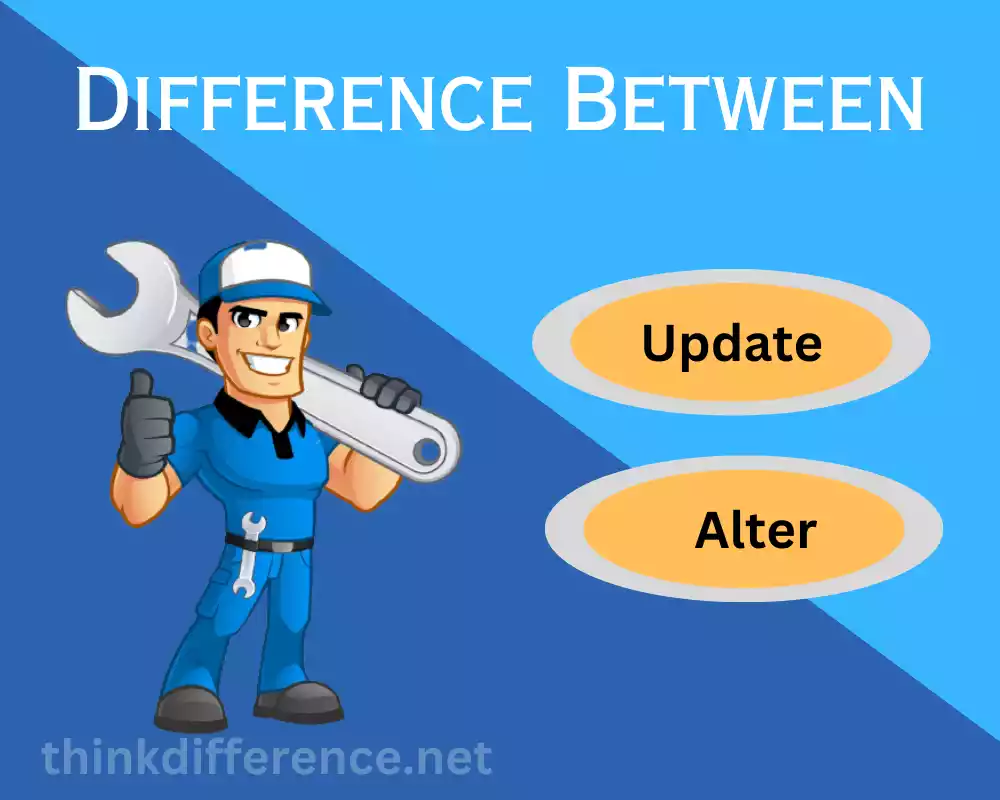Definition of Update and Alter
Update:
An update operation allows data manipulation within an existing database without altering its schema or overall structure. Field or column values in certain records may be changed in order to reflect updated information, address errors and add new records into iterations cycles. An update allows data manipulation within its established structure without disrupting its integrity or format.

The UPDATE statement is an essential tool used by SQL (Structured Query Language), to update tables. This statement specifies which table, its fields or columns that need changing and any values which need assigning. Furthermore, conditions or criteria that determine which records receive updates enable targeted changes.
An update operation in a customer database allows administrators to alter customer account status or phone numbers using an update statement; the statement also specifies which records should be modified with new values for any modified fields.
Updates are necessary in order to maintain accuracy and currency in databases, providing real-time changes without necessitating an overhaul of all information stored.
Alter:
Alter in relation to database systems refers to changing its structure or schema, unlike an update which seeks to update existing records only; alter alters rather includes changing all elements within its framework such as tables, columns, constraints etc.
Alter enables you to make structural modifications that meet changing requirements, optimize performance or adapt to changing business needs. This may involve creating or editing objects within the database as well as their properties such as constraints, columns and relationships – or alterations can involve changing data types, object names and field properties as part of an alteration process.

Common alter operations include adding new columns to tables, renaming columns or tables, changing column data types already present, creating or dropping indexes and altering table relationships.
Consideration must be given to how alter operations will impact both existing data and systems when performing alterations operations, including their effects on databases temporarily going offline, migrations or reorganizations efforts, etc. For optimal data integrity management it is crucial that this process be carefully planned out.
Altering the database structure without altering existing data allows for efficient database management and can support meeting changing business needs while accommodating efficient growth of a growing organization.
Importance of maintaining and modifying database structures

Here are a few factors which illustrate their significance:
- Data Integrity: Database structures contain organizational, relational and constraint elements which define and maintain data integrity within their databases. By regularly changing or maintaining these structures to prevent inconsistencies or redundancies from creeping in or corrupted information being created from scratch; data integrity can be preserved over time through regular maintenance visits that help identify any problems which threaten its integrity and make any corrections required in time to maintain data integrity.
- Performance Optimization: Database Structure is key in optimizing database operations. By designing and altering partitions, indexes, query optimization techniques or partitioning databases efficiently can administrators improve data retrieval and manipulation efficiency as well as query execution times by redesigning these structures accordingly. Well-crafted structures may even increase system performance significantly and decrease query execution times significantly.
- Scalability and Adaptability: Databases must be flexible enough to adapt as business requirements change, accommodating increased data volumes while supporting new functionalities or user needs that change over time. By maintaining and changing structures properly, databases can easily scale up or down as required for any organization.
- Data Consistency and Standardization: Database structures provide a framework to enforce data consistency & standardization throughout an organization. With its appropriate data types, constraints, relationships and rules defined for storage ensuring uniform data types storage under predefined rules enables accurate reporting, analysis and decision making processes.
- Data Security: Database structures play a vital role in data protection with encryption techniques, access control mechanisms and auditing capabilities implemented into them. Administrators can enhance security further by altering or maintaining structures to prevent sensitive information being accessed or altered inappropriately or breached into.
- Data Interoperability and Integration: Databases must interact seamlessly with data from other systems within an organization, making use of structures which promote interoperability by maintaining compatibility among applications or formats and seamlessly exchanging it between systems – ultimately increasing efficiency for an organization as a whole.
- Compliance to Industry Requirements: Many industries must abide by particular compliance and regulations regarding data management practices. By developing or altering database structures to conform with regulatory standards and ensure full compliance with data protection, privacy, and governance regulations.
Maintaining and editing databases structures are critical to ensuring data accuracy, optimizing performance and supporting scalability. They also enforce data consistency, increase security, enable integration and meet regulatory requirements – an ongoing process which demands planning, analysis and implementation to achieve efficient management of information within an organization.
Differences between Update and Alter
1. Scope of Changes:
- Update: An update operation allows alterations of existing data records in a database, with changes made directly to individual rows or records while maintaining overall database structure. This method allows individual values to be altered without impacting overall database organization or structure.
- Alter: This process modifies the database structure by altering database objects such as columns, tables, constraints and indexes – having an impactful change on its layout and organization.
2. Purpose:
- Update: Updates are performed to change or modify existing records in an effort to add or correct information within your database, whether that’s new content or errors that require correcting.
- Alter: An alter operation allows users to make structural modifications to a database by adding, editing or deleting objects within it (tables, columns or indexes) as well as their properties (for instance properties associated with objects like tables columns indexes etc).
3. Impact on Existing Data:
- Update: Updating a database does not have a profound effect on its structure; rather, updating simply modifies specific values while maintaining the overall database architecture.
- Alter: An alter operation could have significant ramifications on existing data, necessitating migration, reorganization or temporary database inaccessibility depending on its scope and nature of changes made to it.
4. Execution Process:
- Update: Updates tend to be faster and simpler than alters; simply change specific values within a database table to be updated.
- Alter: Alters typically involve long execution times and more complicated processes. Schema modifications must take place for any structural modifications in a database to occur, which could impact multiple objects and relationships simultaneously.
5. Examples:
- Update: Updates may involve changing customer addresses in Customer Relationship Management systems; amending an item quantity within an Inventory Database; and/or altering passwords within User Management systems.
- Alter: To alter, for instance, means adding more information into a customer database table by expanding customer tables with more columns or changing data types for individual columns within it, as well as creating indexes to speed up query response time.
Understanding these operations is vital, as they distinguish between those which alter data values (update) and those which change database structures (alter). Utilizing both properly will facilitate effective database management as well as structural changes.
Examples and Use Cases
Below are examples of updating and altering databases.
Update:
- Customer Information Update: A CRM system may use its update operation to modify customer records by amending contact details, updating client status or altering individual preferences.
- Inventory Control: Utilizing an update operation within an inventory database allows businesses to alter quantities or availability based on sales or returns.
- Update Operations: Update operations in financial systems serve to update transaction records with current transactions or correct inaccurate entries, for instance changing account balances or correcting incorrect entries.
- Content Management Systems: Content management systems provide the capability of updating website pages, blog posts, product descriptions or multimedia assets on an ongoing basis.
Alter:
- Add a New Column: When entering new data into an existing database table, an alter operation allows you to add columns. A great example would be adding one called Date Of Birth into a customer table so they may record birthdates of customers.
- Modifying data types: Switching out data types may prove useful when requirements for formats shift. Converting one column from integer type data to decimal can allow more precise calculations.
- Indexation: Modifying or adding indexes can improve query performance for large databases, particularly columns which are frequently accessed. This approach works particularly well when applied to columns which need frequent updates.
- Restructuring Relations: Alter operations allow users to alter relationships among tables by adding junction tables; by doing this, one-to-many relationships can become multiple-to-many relationships between tables.
- Renaming Database: Objects Altering allows you to rename database objects such as columns, tables and constraints for better alignment with naming standards or to provide clearer descriptions.
These examples aren’t exhaustive – their specific use cases depend on your database management system, organization needs or application type.
Best Practices and Considerations
As part of performing update and alter operations in a database system, it’s vitally important that best practices be adhered to for successful execution. Here are a few best practices and factors you should keep in mind:
Updates:
- Validate and Test: Before initiating update operations, always double-check update queries by performing extensive testing in an environment outside of production. This helps identify any possible errors or unexpected effects which might otherwise go undetected.
Transact To Preserve Data Integrity. - Use Transactions: Use transactions when updating to guarantee atomicity and consistency across operations, group updates together for easier management, and keep data integrity even after failure or rollbacks occur.
- Implement Error Handling: Employ appropriate error handling mechanisms during data updating processes in order to respond promptly and appropriately to any exceptions or problems that might arise, in order to preserve data consistency while providing meaningful feedback to applications or users. This will also contribute toward maintaining data consistency for optimal user experiences and providing useful feedback loops for further work on improving application functionality or user experiences.
- Consider Performance Impact: Long update operations could negatively impact database performance, so try scheduling updates when system resources such as CPU, memory and disk I/O usage is low.
- Communication of Updates: If an upgrade involves many users or applications, be sure to communicate any upcoming modifications – as well as potential disruption if any arise – before beginning operations so as to minimize disruption and conflict.
Alters:
- Backup Your Database: Always ensure your database is backed up before performing structural modifications using alter operations to protect data and provide an avenue of recovery in case something unexpected comes up or your information gets lost.
- Plan and Document: Clearly outline and record every stage of alteration, from change request through implementation; including timeline, order of implementation and any requirements or dependencies that might impact its success. Doing this will maintain clarity for smooth implementation.
- Examine and Analyze Impact: Before any modifications to production systems are introduced, test modifications in an non-production environment to observe their impact and ensure compatibility. Assess any possible performance impacts to ensure changes are aligned with desired goals and take place as expected.
- Consider Maintenance: Depending on how extensive the changes are, scheduling downtime for maintenance could help mitigate disruptions to users and stakeholders. Be sure to notify users and stakeholders in advance.
- Monitor and Verify: Once changes are implemented, monitor and verify to make sure everything is functioning as anticipated. Check data integrity, compatibility with applications and performance in order to spot potential problems caused by alterations.
By following these best practices for database update and alteration operations, you can minimize risks, maintain data integrity, ensure stable operations and performance while meeting any data compliance standards or performance demands for database operations.
Conclusion
Updating and Altering your content is essential to maintain relevance, attract audiences, and enhance your brand’s reputation. Embrace the power of regular updates, and leverage alterations to maximize the impact of your content. By staying current and providing valuable insights, you can establish authority, engage users, and achieve lasting success in the online world.



